Chicago Cubs: Looking at past decisions that impacted this year’s team

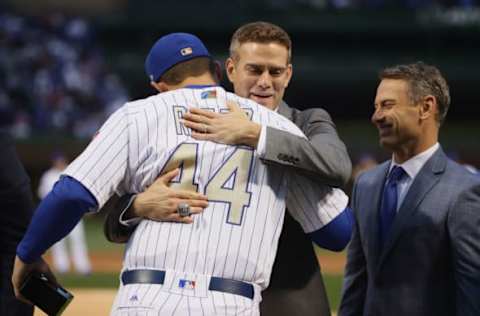
The Chicago Cubs haven’t turned into the dynasty many expected after 2016. Although blame can go any number of ways, the front office deserves some of it.
Expectations around the Chicago Cubs have changed under Theo Epstein and Co.
When Epstein took over as team president in Oct. 2011, the No. 1 goal was to snap the Cubs’ infamous championship drought. Not only did that happen just five year later, but the Cubs have become a perennial championship contender along the way.
Although they’ve made it into four-straight postseasons, the Cubs are fighting for their October lives in 2019. Fans are quick to blame manager Joe Maddon, who entered the season as a lame duck manager in the final year of his contract.
This is foolish, of course; although the 65-year-old doesn’t get every move right — no manager does — he had his team in position to make the postseason once again. Instead of blaming just Maddon for the team’s current state, his players and the Cubs front office also deserve some blame, too.
Discussing Maddon’s in-game moves and the development of those on his roster are conversations for another day, however. Today, the conversation centers on the last three offseasons and how they’ve affected the 2019 Cubs.
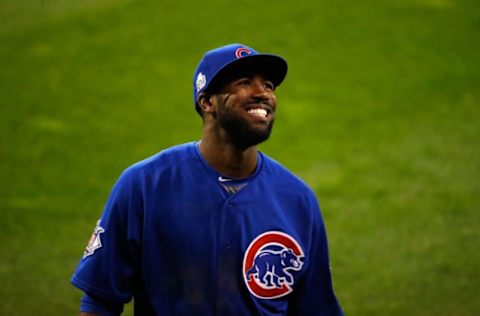
Chicago Cubs: Fowler’s departure felt three seasons later
“You go, we go” became synonymous with Dexter Fowler during his two-season stint with the Cubs. The center fielder and leadoff man slashed .261/.367/.427, numbers that don’t necessarily jump off the page.
Fowler was a stellar table setter for the Cubs, however, one who got on base frequently and worked long/quality at-bats ahead of the likes of Kris Bryant, Anthony Rizzo and others. Following the 2016 season, though, he hit free agency.
Fowler earned himself a hefty contract following the 2016 campaign. He signed a five-year, $82.5 million deal with the St. Louis Cardinals, a move that hurt the Cubs in more ways than one. Not only did Fowler leave the North Side, but he left for the Cubs’ No. 1 rival.
Although he’s produced a mixed bag offensively with the Cardinals, Fowler leaving left a void atop the Cubs lineup. Since 2017, the team has used a plethora of leadoff hitters.
Kyle Schwarber notoriously struggled leading off in 2017, even getting demoted to Triple-A along the way. The Cubs have tried Albert Almora. Jr, Ian Happ, Jason Heyward and others as leadoff men, all to no avail.
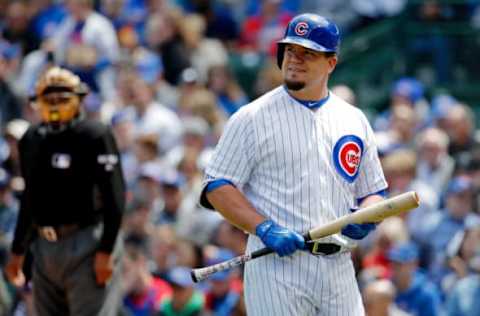
Chicago Cubs: So what’s the replacement plan?
The Cubs weren’t going to give Fowler the contract he received from the Cardinals. In this sense, it’s unfair to blame the front office for letting him walk. However, their mistake was not having a true contingency plan for his departure.
Schwarber was supposed to be the guy due to his keen eye for the strike zone and ability to get on base. Even then, though, the team was moving one of its sluggers out of an RBI spot. Sure, you can hit home runs anywhere, but Schwarber is better suited in a non-leadoff role.
The Cubs have had three offseasons to find a reliable replacement for Fowler atop the order. In 2019, their leadoff hitters rank dead last in MLB in average and on-base percentage.
Part of this is due to Ben Zobrist — a reliable leadoff option — taking a personal leave of absence this season. Zobrist deserves no scrutiny for stepping away. Had he been with the club all season, though, the Cubs would rank higher in those two categories.
Be that as it may, the leadoff spot has been a position of question for three seasons running. One has to wonder how the Cubs offense would look with an everyday, on-base machine player hitting ahead of the team’s All-Star core.
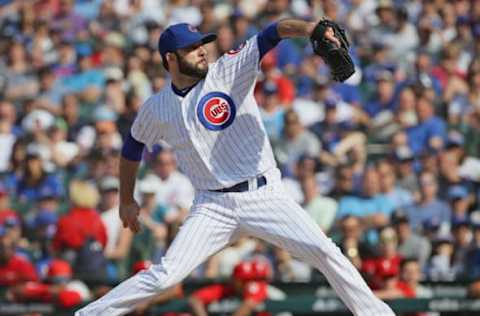
Chicago Cubs: The Brandon Morrow, Tyler Chatwood and Yu Darvish offseason
Two more key members of the 2016 championship squad weren’t re-signed by the Cubs following the 2017 season. And, arguably, their departures were far more significant than Fowler due to their positions on the roster..
By letting Jake Arrieta (Philadelphia Phillies) and John Lackey (unsigned) walk in free agency, the Cubs were tasked with replacing 40 percent of their starting rotation heading into 2018. This was done by signing Tyler Chatwood and Yu Darvish, moves that looked good, initially.
Instead, Chatwood led MLB with walks in 2018, getting demoted to the bullpen after the Cubs acquired Cole Hamels from the Texas Rangers. Darvish made just eight starts last season, the last coming on May 20, batting ineffectiveness before succumbing to a season-ending injury in the sumner.
Speaking of injury, closer Brandon Morrow — who’s dealt with numerous injuries in his big league career — last pitched July 15, 2018. Although he was dominant last season, his injury issues followed him to Chicago.
Morrow’s likely thrown his last pitch for the Cubs despite not appearing in a game in 2019. Since the Cubs had no closer this season, they brought Craig Kimbrel aboard for three years and $43 million. Kimbrel has looked good at times, though he’s been inconsistent.
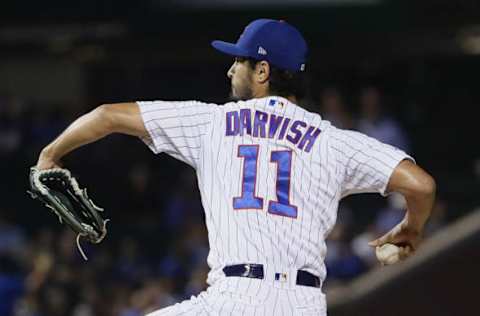
Chicago Cubs: Two arms turn the corner in 2019
Chatwood and Darvish, on the other hand, have bounced back in a big way in 2019. Chatwood has become a reliable reliever capable of pitching in any role, while Darvish has become the team’s ace in the rotation behind a dominant second half this season.
The problem here, though, is that Chatwood is making $12.5 million, a hefty price for a non-closer or setup man reliever. He could return to the rotation in 2020, though that’s a long way down the road.
Darvish is living up to his contract, but there was uncertainty surrounding him entering 2019 after last season. As a result, the Cubs picked up Cole Hamels’ $20 million team option for 2019. This, combined with the aforementioned three pitchers, put a strain on the Cubs’ payroll in 2019.
The Cubs’ inability to develop a homegrown starting pitcher under Epstein is also an issue for another day. If the Cubs had such a pitcher, though, perhaps they don’t sign one of Chatwood or Darvish, if not both.
Essentially, having no homegrown starting pitchers created the need to sign Chatwood and Darvish. Signing those two strained the Cubs’ payroll, which has been a huge narrative around the 2019 team.
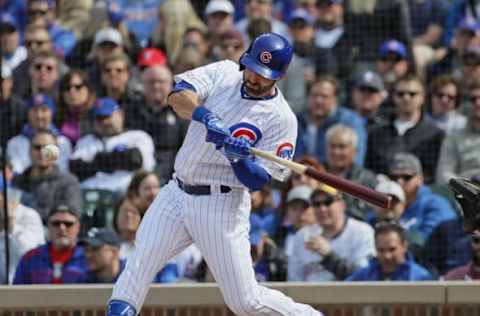
Chicago Cubs: The oft-mentioned “budget constraints”
Epstein famously stated that the Cubs offense “broke” at some point down the stretch in 2018. Kris Bryant’s lingering shoulder injury is partially to blame, though not enough to shoulder all the blame (no pun intended).
More from Cubbies Crib
- Cubs starting pitching has been thriving on the North Side
- Make no mistake: the Cubs are very much about power hitters
- Cubs are giving pitcher Javier Assad a deserved shot
- Cubs: It’s time to start thinking about potential September call-ups
- Cubs: P.J. Higgins deserves to be in the lineup on a daily basis
In 2018, the Cubs scored one or zero runs 39 times (40, if you count the National League Wild Card game). Between this and Epstein’s comments, the general thought was that big changes were coming to the team’s position player group.
“Change” came in Daniel Murphy leaving in free agency, trading Tommy La Stella for next to nothing to the Los Angeles Angels and signing veteran infielder Daniel Descalso. Thus, the Cubs brought back largely the same offensive group entering 2019.
Change is coming
Although they’ve had plenty of big performances, the Cubs still have battled inconsistent stretches at the plate far too often in 2019. It’s naive to think any one offseason addition could’ve helped this.
Still, it felt like big moves were coming after the dismal ending to 2018. What would D.J. Lemahieu — who signed a two-year contract with the New York Yankees for just $24 million — look like atop the Cubs lineup?
Next. Top-5 clutch hitters in Cubs history. dark
The front office’s loyalty to the Chicago Cubs position player group, those who helped break the World Series drought, is admirable. However, one can bet that change definitely will come this offseason, whether you’re ready for it or not.